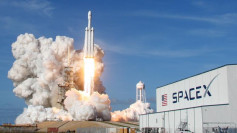The asteroid belt, a region in our solar system where small bodies, mostly rocky and some metallic, orbit the sun. These tiny bodies are considered minor planets, too. They mostly move between the orbits of Mars and Jupiter.
But how did this orbiting area of debris form? Does it reflect the rocky remains of a former world from eons ago, or is it a kind of assembly place for a planet to be?
Over the decades, scientists have viewed both answers as possibilities. But more recent studies suggest that the large ring of space rocks is likely to have never been a whole planet, and is impossible to be so in the very distant interstellar future. Why? There's just not enough material out there.
Millions of years ago, our solar system was far from a stable and well-organized environment. Planets were still emerging, tossing out the orbits of their neighbors in the process. In the face of all this activity, some astronomers used to assume that a planet that orbited our Sun between the trajectories of Mars and Jupiter has broken into pieces, creating an asteroid belt that is now floating in space.
Astronomers believed they were all that remained of a rocky planet, long since broken apart by the gravity of Jupiter. But after scholars started to examine patterns of iron meteorites that dropped to Earth as meteors, it became apparent that they did not originate from a single parent body.
As a result, the thinking started to turn to the possibility that the asteroid belt was full of planetesimals, or parts of a planet that had either not evolved or failed to develop. But the problem with this idea is that there's just not enough material in the belt to make that kind of mass. Ceres is the single largest asteroid in the belt, about the size of Australia, with about half the mass of all belt material.
Just because the asteroid belt doesn't represent the remains of a previous planet doesn't mean that scientists have totally discarded the notion. The belt could have come from parts of other planets that still exist, or be part of a planetesimal-which is like a baby planet-that never fully formed before being broken apart.
Whatever chaos may have induced these bits and pieces to be sent to the asteroid belt, the reason they remain is that Mars and Jupiter's orbits finally settled. So if the asteroid happens to make its way there, it certainly won't go anywhere.
The mystery of the solar system that most astronomers are concerned with is how the planets were created. The structure, location, and orbit of the asteroids continue to reveal clues about the distant past of the planets.
And though we think more about planets than about asteroids in general, asteroids are a pretty useful way to try to figure out what happened to planets. They're a key piece of evidence in this story.






